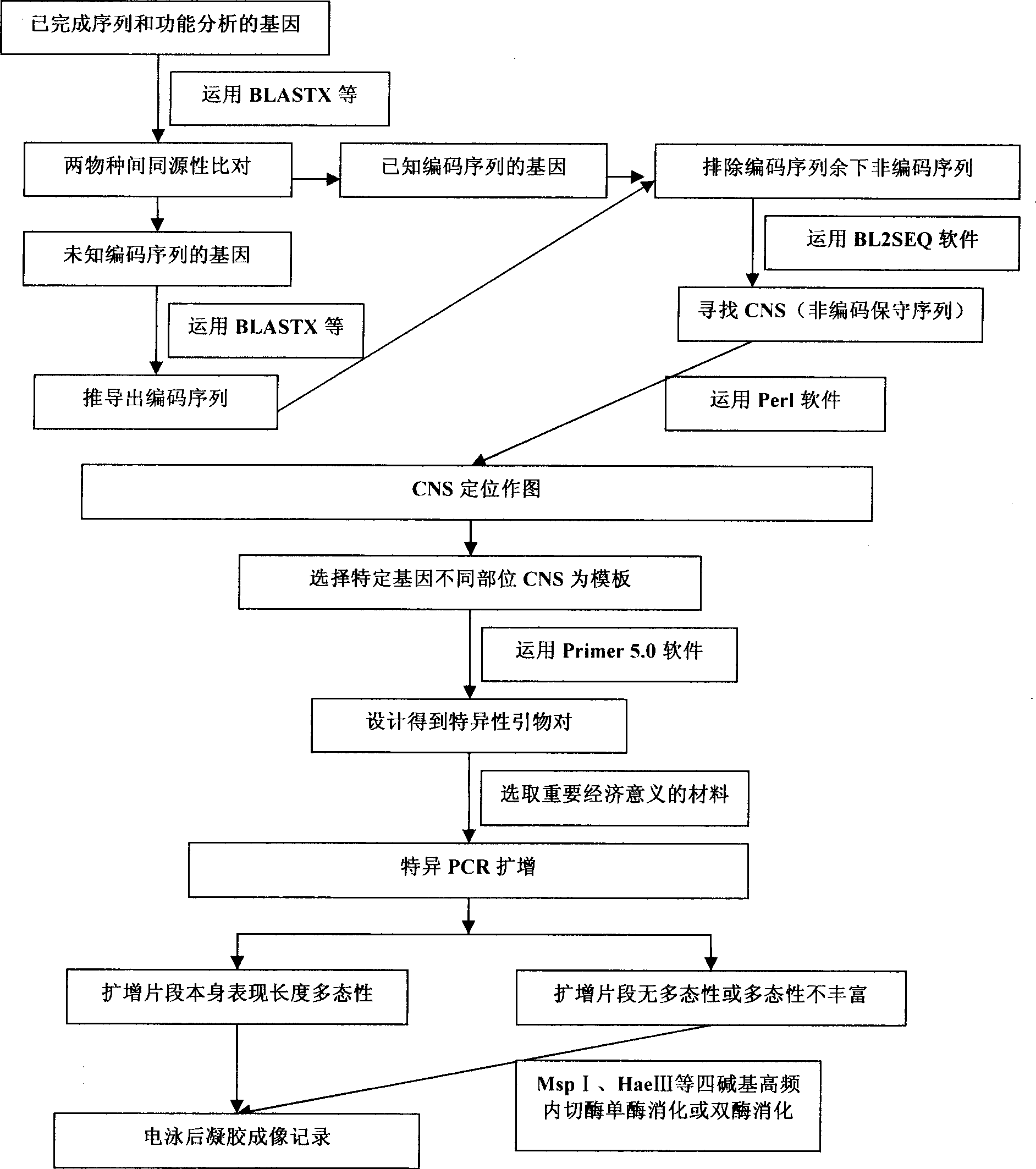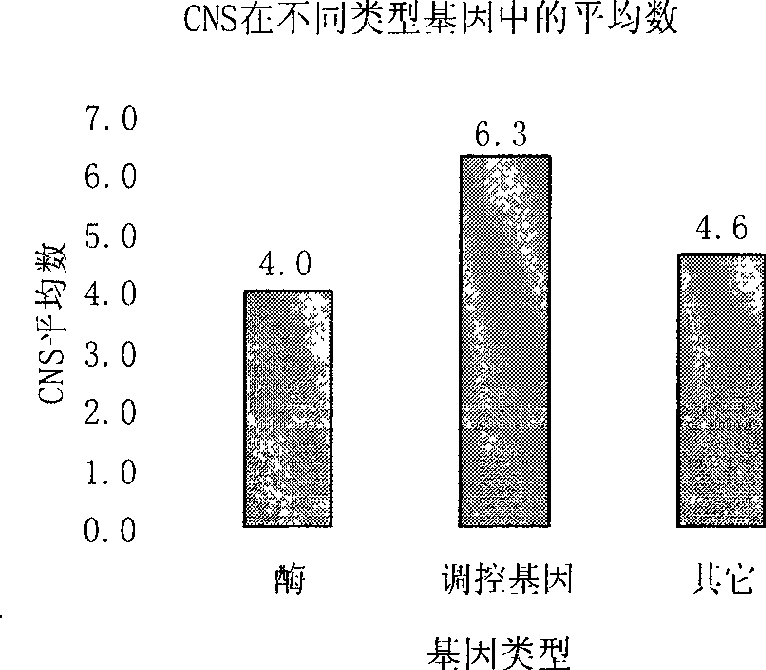General use molecular marker CNS-AFLP for gramineae
A molecular marker and general-purpose technology, which is applied in the determination/inspection of microorganisms, biochemical equipment and methods, fermentation, etc., can solve the problems of heavy workload, difficult application, and in-depth, etc., and achieve the goal of increasing efficiency and promoting development Effect
- Summary
- Abstract
- Description
- Claims
- Application Information
AI Technical Summary
Problems solved by technology
Method used
Image
Examples
Embodiment
[0046] 1. Material preparation
[0047] 1.1 Plant material
[0048] In this example, 10 representative crops of different genera of Poaceae were selected to detect the versatility and polymorphism performance of the primers, namely rice, barley, wheat, oats, millet, millet, pearl millet, sorghum, corn and dragon claw millet.
[0049] 1.2 Main reagents
[0050] The primers for DNA molecular marker CNS-AFLP were synthesized by Shanghai Bioengineering Company. The Taq enzyme, dNTP, 10×PCR Buffer, 100bp DNA ladder used in the PCR reaction, and the four-base endonuclease (MspI, HaeIII, HhaI, TaqI) used in the enzyme digestion reaction were all produced by Dalian Bao Biological Engineering Co., Ltd.
[0051] Sodium Dodecyl Sulfate (SDS), Tris (Tris), and Agarose (Agrose) were packaged by Shanghai Sangong.
[0052] 1.3 Instruments and equipment
[0053] The PCR instrument used in this experiment was produced by Eppendorf Company; the centrifuge was produced by SIGMA Company. Ele...
PUM
 Login to View More
Login to View More Abstract
Description
Claims
Application Information
 Login to View More
Login to View More - Generate Ideas
- Intellectual Property
- Life Sciences
- Materials
- Tech Scout
- Unparalleled Data Quality
- Higher Quality Content
- 60% Fewer Hallucinations
Browse by: Latest US Patents, China's latest patents, Technical Efficacy Thesaurus, Application Domain, Technology Topic, Popular Technical Reports.
© 2025 PatSnap. All rights reserved.Legal|Privacy policy|Modern Slavery Act Transparency Statement|Sitemap|About US| Contact US: help@patsnap.com



